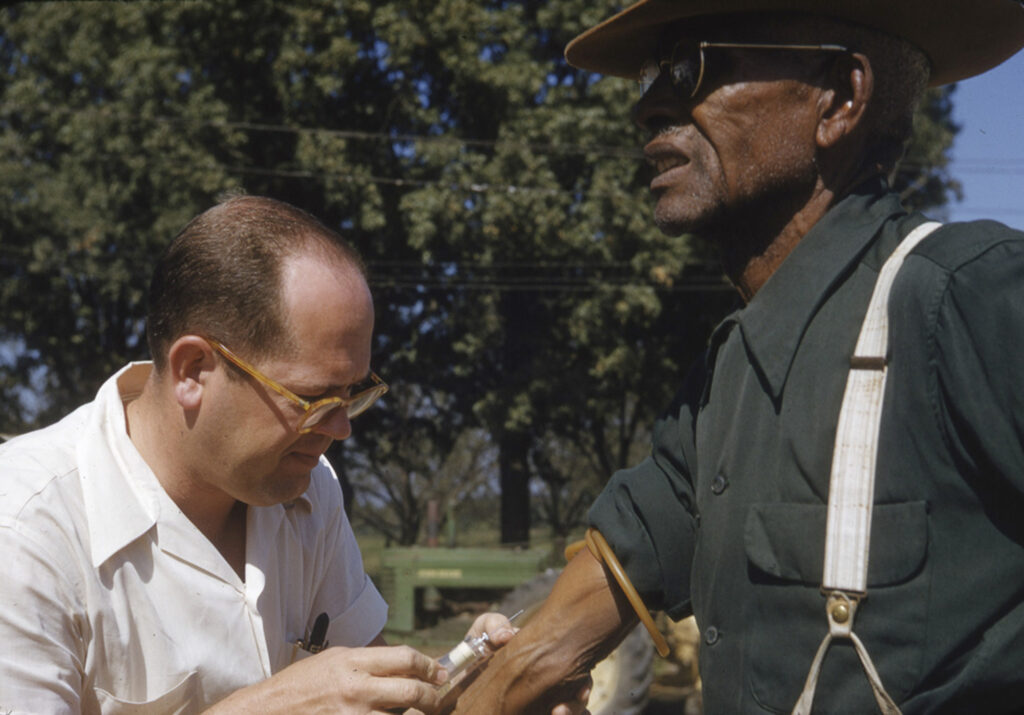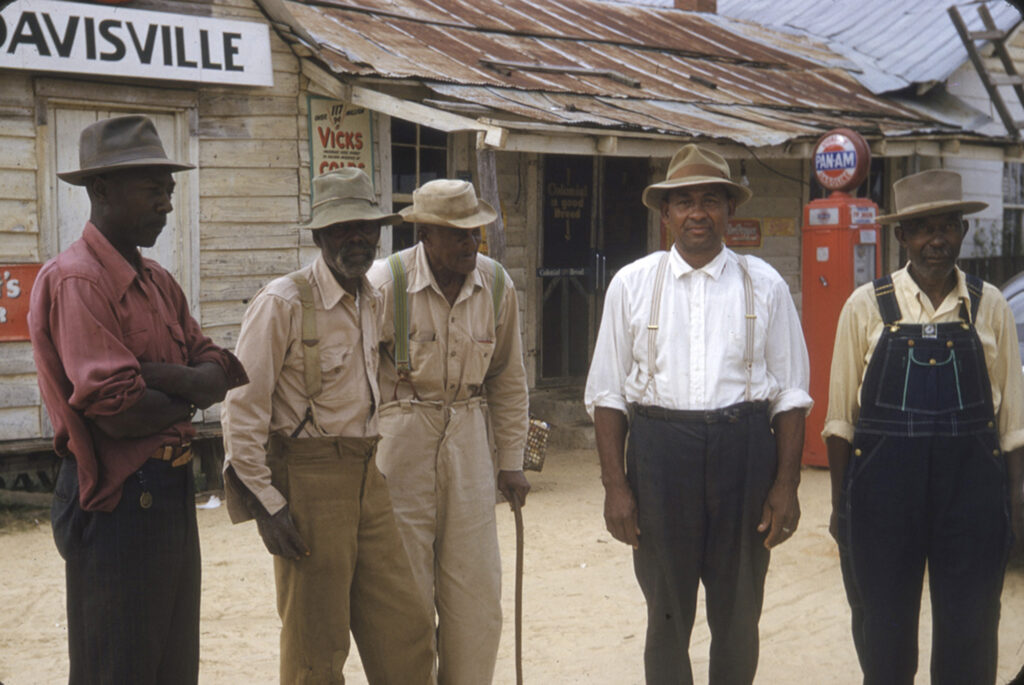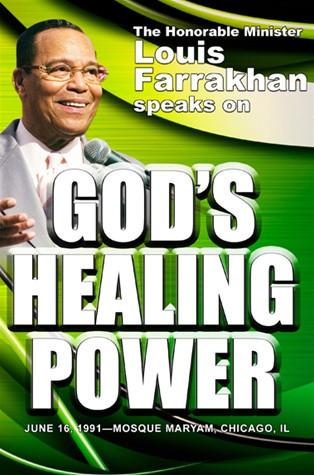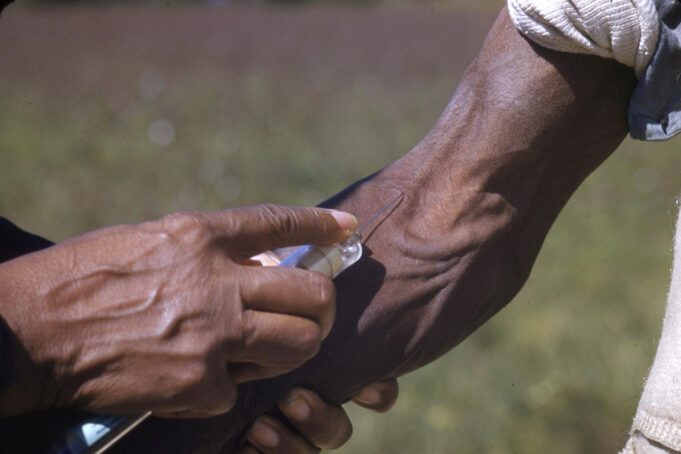The United States of America was in a Great Depression when residents of a small, rural Black city were targeted to be part of an experiment that would have detrimental effects on the Black community through the generations.
In 1930, Macon County, Alabama, was 82 percent Black. Its county seat is Tuskegee, home to the infamous, 40-year “Tuskegee Study of Untreated Syphilis in the Negro Male.” The study took place between 1932 and 1972, but America has a history of medical abuse and experimentation on Black bodies that far surpasses those 40 years and that is still ongoing today.
Tuskegee Syphilis Experiment
The United States Public Health Service wanted to study the “natural history” of syphilis, despite the disease being in America since at least the 1490s, according to researchers.
“We already knew what happened to people that didn’t get treated for their syphilis. That was called history,” Dr. Michelle Drew, a certified nurse, midwife and executive director of Ubuntu Black Family Wellness, told The Final Call. She said she can’t understand the intentional cruelty of what took place. “The only answer to that is that you didn’t really believe that those men and their wives and their children and all the people that would be impacted by their disabilities and their deaths from untreated syphilis were human,” she said.

The Public Health Service collaborated with Tuskegee Institute, now Tuskegee University, and conducted the study at the school’s hospital. Initially, 600 Black men signed up for the study, and 399 had syphilis. Only, the men were told they were being treated for bad blood and were given aspirin, iron and placebos as treatment.
“I didn’t know nothing, just a country boy,” said Charles Pollard, one of the last survivors of the study, in a 1993 documentary titled “The Deadly Deception.” “They said they was gon’ treat us. They just said bad blood,” he said.
Paying for burial costs and insurance was one of many of the free services researchers offered to the Black men who participated. The true motive of the study was documented in 1933 letter exchanges with statements such as, “As I see it, we have no further interest in these patients until they die” and “… the main object of the present activities is bringing men to necropsy.”
The men were left untreated for syphilis, despite the wide use of penicillin in 1943 and the standard treatment of it in 1947. The study was only terminated after media coverage caused widespread outrage. But by that time, the damage was done. One-hundred and twenty-eight Black men died of syphilis or related complications, 40 spouses contracted the disease, and 19 children were born with it.
In 2016, Marcella Alsan, then-professor with Stanford Medical School’s Center for Health Policy/Primary Care Outcomes and Research, and Marianne Wanamaker, associate professor of economics at the University of Tennessee, found that the Tuskegee syphilis experiment is correlated with increased medical mistrust and mortality. In a working research paper, they estimated that the study reduced life expectancy in Black men 45 years and older by more than a year. They also wrote that the study accounted for 35 percent of the life expectancy gap between Black men and White men in 1980.
“We’re now 50 years from the time that the study was made public and ended but (90) years from when it began, and we’re still seeing the same things,” Dr. Drew said. “We still know that in the United States, your chances of whether or not you’re going to be born into and live your whole life and die in poverty is the zip code that you live in. And most Black people live in the same zip code that their parents were born in and their parents were born in. And those zip codes were determined by segregation.”
She described the multiple layers of how racism leads into health disparities, including institutional racism such as health facilities closing down in Black rural areas and opening up in wealthy White areas.
Before and beyond Tuskegee
Medical abuse and experimentation of Black bodies can be traced back to the ships transporting enslaved Africans to America.
“Most slave ships had doctors aboard. Though some doctors were professional, many took a cruel approach in treating sick Africans,” writes Javonte Anderson, racism and history enterprise reporter for USA Today. “Ill captives could be thrown overboard, and as they were regarded as property, the merchants and owners could collect insurance money. Captives were often forced to take medication or food while being threatened by a whip, cutlass or pistol.”
In an article on the history of medical abuses against Black people, he noted that many slave owners used medicine to punish and torture slaves. Enslaved women were forced to undergo reproductive experiments without anesthesia. White medical students used the dead bodies of slaves for medical experimentation.
In 1961, 11 years before the Tuskegee syphilis experiment would end, Civil Rights activist Fannie Lou Hamer went to a hospital to remove a tumor from her uterus and was given a hysterectomy without her knowledge.
“It is for good reason that the Most Honorable Elijah Muhammad said he intends to destroy the medical establishment,” said Nation of Islam Student Minister Dr. Wesley Muhammad to The Final Call. “As the medical establishment in general grew up, it grew as an enemy to Black people,” he said, stating how clinics and hospitals grew as places of experimentation where Black people were the prime guinea pigs.
Black people in America heavily mistrust the healthcare industry due to the historical and ongoing medical abuses. A 2017 study titled “More than Tuskegee: Understanding Mistrust about Research Participation” documented comments made by Black participants. Those comments included: “Just that awareness [about Tuskegee] is enough to stand up generation after generation”; “You don’t know what they are giving you and what they’re experimenting on you. They are very secretive. They say one thing and might do another”; and “… a lot of Black people don’t ever encounter White people. Whenever I encounter White people, they’re coming to take. The only White person in my neighborhood is the insurance man, and he only takes my money.”

“Many of the research that’s done, once we have the answer, we don’t have access to it,” Dr. Drew expressed.
Nation of Islam Student Minister Dr. Wesley Muhammad, a researcher with a Ph.D. in Islamic studies, described the White man as a “scientist” and the so-called Negro his “science project.”
“The only thing that has changed … is the White man’s technology is greater. His scientific knowledge is more superior, so he can conduct his experimentation on us, and we not even know it,” Student Min. Muhammad explained. “We don’t have to go into his clinics, now, to be medically experimented on, scientifically experimented on. He’s able to transfer his lab into our homes. So what’s changed is he’s more sophisticated.”
Despite over 400 abusive years, Black people still trust White America because “we don’t recognize the threat in our environment. We are prey who believe the predator is our benign friend,” Student Min. Muhammad stated.
Black infant and maternal mortality
Dr. Drew has five children. She said by the time she had children, she was college educated and lived in a good neighborhood. But that didn’t stop the assumptions by those in health care that she was poor.
“I was always talked down to. I was always treated disrespectfully,” she expressed.
A 2019 study on “inequity and mistreatment during pregnancy and childbirth” found that Black, Hispanic and Indigenous women experience consistently higher mistreatment than White women. A research article published in 2020 titled “Physician–patient racial concordance and disparities in birthing mortality for newborns” found that “in the United States, Black newborns die at three times the rate of White newborns.”
In 2018, Black infants were four times more likely to die from complications related to low birthweight and were twice as likely to die from sudden infant death syndrome than White infants, according to the U.S. Department of Health and Human Services’ Office of Minority Health. Black mothers were twice as likely to receive late or no prenatal care compared to White mothers.

A study published at the beginning of this year on gendered racism and maternal mortality found that “Black women’s maternal mortality rates were typically double that of White women. Further, Black women’s maternal mortality rates in their early twenties aligned with the maternal mortality rates of White women in their mid-thirties or older.”
Due to the mortality rates of Black mothers and infants, filmmaker Tonya Lewis Lee co-directed “Aftershock,” a documentary released on Hulu in January.
“It became clear that the Black maternal mortality rate is just going up. I mean, it’s going up for all of us in this country, but for Black women, it’s getting worse,” Ms. Lee told Democracy Now in a July interview. “And I really wanted to tell the story of what was happening in the United States around Black women’s health. We know that Black women’s health and infants’ health is the marker of the health of a nation. If mothers aren’t doing well, if infants aren’t doing well, then none of us can do well.”
Dr. Wesley Muhammad noted that the film not only showed Black maternal mortality, but it showed how medical institutions are complicit in Black maternal mortality.
“This doesn’t have to happen. That’s what I take away from the documentary. The numbers of Black mothers dying postpartum or on a table, if you will, are so unnecessary. If just standard care were given to many of these Black mothers, they would be alive today,” he said. “But standard care isn’t given. They are treated as experimental subjects.”
He described that just “as a White man in a blue officer’s uniform is to the Black male, the White man in a White doctor’s robe is to the Black female.”
Undertreatment for pain
Black people’s skin is thicker than White people’s skin. At least, that’s what White doctors and medical students often believe. A 2016 study titled “Racial bias in pain assessment and treatment recommendations, and false beliefs about biological differences between blacks and whites” examined why Black people are systematically undertreated for pain relative to Whites. Study participants who held false beliefs about biological differences between Blacks and Whites reported lower pain ratings for Black people.
“Half of a sample of White medical students and residents endorsed these beliefs. Moreover, participants who endorsed these beliefs rated the Black (vs. White) patient’s pain as lower and made less accurate treatment recommendations,” the study says.
Those beliefs included Blacks aging more slowly than Whites, Black people having less sensitive nerve endings, Blacks having smaller brains, Black skin being thicker and Blacks having a less efficient respiratory system.
“They asked all of these different questions, which were some of the things that have literally been said about Black people for hundreds of years, even back to when Thomas Jefferson and Samuel Cartwright wrote a lot of these things that basically justified that there were biological differences between slaves and White people, to justify slavery,” Dr. Drew said.
She explained that the medical students and doctors who were saying they believe Black people feel less pain might subscribe a White patient with a narcotic to manage severe pain in their ankle but may give a Black patient Tylenol. As a midwife, she said she also sees that at play in real time. White OBGYNs are more likely to offer White women narcotics for their pain and are more likely to offer Black women over-the-counter medications, she said.
She described pain as a frequent symptom of the complications that are killing Black women.
“So if you’ve had a C-section and maybe you have internal bleeding, you may be complaining that you’re having really, really severe abdominal pain, and that pain is worse than I would expect it to be if you weren’t having a complication,” she said. “So if somebody doesn’t believe you when you say that you’re having severe pain, then are they less likely to do the tests that they need to do to diagnose your complication?”
She referenced Serena Williams’ case as an example. After the birth of her daughter in 2017 by C-section, the tennis star reported having shortness of breath and alerted a nurse.
“Why would anybody wake up after major surgery and tell a nurse that I have chest pain and they tell her, ‘Let me give you some pain medicine, go back to bed. You’re just exaggerating,’” Dr. Drew questioned. “Had she not been willing to advocate for herself, she would have been another one of the stories of people who died.”
She said that as a midwife, she has noticed that Black women have been seeking her out more over the past few months and years and are intentionally choosing doulas.
“We do see that a lot more people are choosing to come out of the hospital, because it’s like, I want a midwife. And I want a Black midwife who looks like me, who is going to listen to me, who’s going to respect my choices, who’s going to respect my values, who isn’t going to disregard me, who’s not going to ignore my concerns,” she said. “And if going into the hospital is a place where I’m likely to be exposed to violence, then I’m not going to go there.”
Dismantling the system
The Honorable Minister Louis Farrakhan teaches that the human body itself is its own hospital. “We can cure this body of ills that it has if the person inside the body knows how to connect with the Powerful Being that created it and then makes up his or her mind to live in accord with the Law of Life that sustains it,” he said in a lecture on “God’s Healing Power.”
Dr. Drew described the importance of looking back at things like the Tuskegee study. “As we look to the past, if we forget about it, then we will continue this revolving cycle,” she said. “And so, it’s really time to dismantle the system and replace it with something else.”
Dr. Wesley Muhammad described White Supremacy as an “octopus with many tentacles.”
“Every institution that is distinctly American is a tentacle on the octopus of American White Supremacy, whether it is the medical establishment, whether it is the educational system, whether it is the legal system, whether it is entertainment,” he said.
He stated that Black people must totally disengage from the octopus of American White Supremacy and that the only way to do that is to separate.
“None of these systems can be tweaked on our behalf,” stated Student Min. Muhammad. “They are inherently opposed to the progress of Black people, the way of being of Black life in America, which is the strongest, loudest evidence that there is no solution for this problem of race in America except what God gave, a total and complete separation of the two people,” he added.













